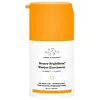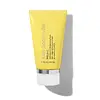What's inside
What's inside
 Key Ingredients
Key Ingredients

 Benefits
Benefits

 Concerns
Concerns

 Ingredients Side-by-side
Ingredients Side-by-side

Water
Skin ConditioningAzelaic Acid 10%
BufferingHydroxyethyl Acrylate/Sodium Acryloyldimethyl Taurate Copolymer
Emulsion StabilisingSalicylic Acid 1%
MaskingGlycerin
HumectantCucurbita Pepo Seed Oil
EmollientSalvia Hispanica Seed Oil
MoisturisingSclerocarya Birrea Seed Oil
HumectantPentylene Glycol
Skin ConditioningDiglucosyl Gallic Acid
Niacinamide
SmoothingPhloretin
AntioxidantAllantoin
Skin ConditioningFerulic Acid
AntimicrobialDipotassium Glycyrrhizate
HumectantTremella Fuciformis Sporocarp Extract
AntioxidantBehenic Acid
CleansingGlutathione
Linoleic Acid
CleansingTocotrienols
Skin ConditioningThioctic Acid
AntioxidantLinolenic Acid
CleansingErgothioneine
AntioxidantCholesterol
EmollientCeramide Ns
Skin ConditioningCeramide AP
Skin ConditioningCeramide EOP
Skin ConditioningCeramide Eos
Skin ConditioningCeramide NP
Skin ConditioningSodium Hyaluronate Crosspolymer
HumectantAmylopectin
Ellagic Acid
Skin ConditioningPseudozyma Epicola/Camellia Sinensis Seed Oil Ferment Extract Filtrate
HumectantCaprooyl Phytosphingosine
Skin ConditioningCaprooyl Sphingosine
Skin ConditioningSqualane
EmollientAscorbyl Palmitate
AntioxidantAcetyl Glucosamine
Skin ConditioningPunica Granatum Extract
AstringentDextrin
AbsorbentSebacic Acid
BufferingOryza Sativa Bran Oil
EmollientTocopherol
AntioxidantCeteareth-25
CleansingPhenoxyethanol
PreservativeSorbitan Isostearate
EmulsifyingPolydextrose
HumectantCetyl Alcohol
EmollientCaprylyl Glycol
EmollientChlorphenesin
AntimicrobialPolysorbate 60
EmulsifyingEthylhexylglycerin
Skin ConditioningWater, Azelaic Acid 10%, Hydroxyethyl Acrylate/Sodium Acryloyldimethyl Taurate Copolymer, Salicylic Acid 1%, Glycerin, Cucurbita Pepo Seed Oil, Salvia Hispanica Seed Oil, Sclerocarya Birrea Seed Oil, Pentylene Glycol, Diglucosyl Gallic Acid, Niacinamide, Phloretin, Allantoin, Ferulic Acid, Dipotassium Glycyrrhizate, Tremella Fuciformis Sporocarp Extract, Behenic Acid, Glutathione, Linoleic Acid, Tocotrienols, Thioctic Acid, Linolenic Acid, Ergothioneine, Cholesterol, Ceramide Ns, Ceramide AP, Ceramide EOP, Ceramide Eos, Ceramide NP, Sodium Hyaluronate Crosspolymer, Amylopectin, Ellagic Acid, Pseudozyma Epicola/Camellia Sinensis Seed Oil Ferment Extract Filtrate, Caprooyl Phytosphingosine, Caprooyl Sphingosine, Squalane, Ascorbyl Palmitate, Acetyl Glucosamine, Punica Granatum Extract, Dextrin, Sebacic Acid, Oryza Sativa Bran Oil, Tocopherol, Ceteareth-25, Phenoxyethanol, Sorbitan Isostearate, Polydextrose, Cetyl Alcohol, Caprylyl Glycol, Chlorphenesin, Polysorbate 60, Ethylhexylglycerin
Dimethicone
EmollientAscorbic Acid
AntioxidantPolysilicone-11
PEG-10 Dimethicone
Skin ConditioningHippophae Rhamnoides Fruit Oil
Skin ProtectingDivinyldimethicone/Dimethicone/Phenylsilsesquioxane Crosspolymer
Carthamus Tinctorius Seed Oil
MaskingBrassica Campestris Seed Oil
Skin ConditioningBisabolol
MaskingGlycyrrhiza Glabra Root Extract
BleachingCitrus Aurantium Dulcis Peel Oil
MaskingNiacinamide
SmoothingMentha Viridis Leaf Oil
AstringentPogostemon Cablin Leaf Oil
MaskingZingiber Officinale Root Extract
MaskingCeramide NP
Skin ConditioningCaprylic/Capric Triglyceride
MaskingPolyglyceryl-3 Diisostearate
EmulsifyingUbiquinone
AntioxidantAstragalus Membranaceus Root Extract
EmollientSpilanthes Acmella Flower/Leaf/Stem Extract
AntimicrobialAlthaea Officinalis Root Extract
Skin ConditioningOryza Sativa Bran Extract
Skin ConditioningRosmarinus Officinalis Leaf Extract
AntimicrobialLimonene
PerfumingDimethicone, Ascorbic Acid, Polysilicone-11, PEG-10 Dimethicone, Hippophae Rhamnoides Fruit Oil, Divinyldimethicone/Dimethicone/Phenylsilsesquioxane Crosspolymer, Carthamus Tinctorius Seed Oil, Brassica Campestris Seed Oil, Bisabolol, Glycyrrhiza Glabra Root Extract, Citrus Aurantium Dulcis Peel Oil, Niacinamide, Mentha Viridis Leaf Oil, Pogostemon Cablin Leaf Oil, Zingiber Officinale Root Extract, Ceramide NP, Caprylic/Capric Triglyceride, Polyglyceryl-3 Diisostearate, Ubiquinone, Astragalus Membranaceus Root Extract, Spilanthes Acmella Flower/Leaf/Stem Extract, Althaea Officinalis Root Extract, Oryza Sativa Bran Extract, Rosmarinus Officinalis Leaf Extract, Limonene
 Reviews
Reviews

Ingredients Explained
These ingredients are found in both products.
Ingredients higher up in an ingredient list are typically present in a larger amount.
Ceramide NP is a type of ceramide and formally known as ceramide 3.
Ceramides are intercellular lipids naturally found in our skin that bonds dead skin cells together to create a barrier. They are known for their ability to hold water and thus are a great ingredient for dry skin.
Ceramides are an important building block for our skin barrier. A stronger barrier helps the skin look more firm and hydrated. By bolstering the skin ceramides act as a barrier against irritating ingredients. This can help with inflammation as well.
If you would like to eat ceramides, sweet potatoes contain a small amount.
Read more about other common types of ceramides here:
Ceramide AP
Ceramide EOP
Niacinamide is a multitasking form of vitamin B3 that strengthens the skin barrier, reduces pores and dark spots, regulates oil, and improves signs of aging.
And the best part? It's gentle and well-tolerated by most skin types, including sensitive and reactive skin.
You might have heard of "niacin flush", or the reddening of skin that causes itchiness. Niacinamide has not been found to cause this.
In very rare cases, some individuals may not be able to tolerate niacinamide at all or experience an allergic reaction to it.
If you are experiencing flaking, irritation, and dryness with this ingredient, be sure to double check all your products as this ingredient can be found in all categories of skincare.
When incorporating niacinamide into your routine, look out for concentration amounts. Typically, 5% niacinamide provides benefits such as fading dark spots. However, if you have sensitive skin, it is better to begin with a smaller concentration.
When you apply niacinamide to your skin, your body converts it into nicotinamide adenine dinucleotide (NAD). NAD is an essential coenzyme that is already found in your cells as "fuel" and powers countless biological processes.
In your skin, NAD helps repair cell damage, produce new healthy cells, support collagen production, strengthen the skin barrier, and fight environmental stressors (like UV and pollution).
Our natural NAD levels start to decline with age, leading to slower skin repair, visible aging, and a weaker skin barrier. By providing your skin niacinamide, you're recharging your skin's NAD levels. This leads to stronger, healthier, and younger looking skin.
Another name for vitamin B3 is nicotinamide. This vitamin is water-soluble and our bodies don't store it. We obtain Vitamin B3 from either food or skincare. Meat, fish, wheat, yeast, and leafy greens contain vitamin B3.
The type of niacinamide used in skincare is synthetically created.
Learn more about Niacinamide